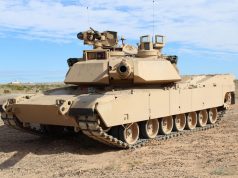The US Air Force and US Army have completed a joint trial of a new tool to expedite the coordination and resolution of air and surface fires.
Developed under a program led by the Defense Advanced Research Projects Agency (DARPA), the Airspace Total Awareness for Rapid Tactical Execution (ASTARTE) software was deployed in Field Experiment 1 (FX-1) to enhance efficiency in airspace management and joint fires integration between the US Army and US Air Force.
The 805th Combat Training Squadron, known as the Shadow Operations Center – Nellis (ShOC-N), recently served as the host for FX-1 at Nellis Air Force Base in Nevada.
The 805th Combat Training Squadron employed the ASTARTE software, whose development was launched in 2020.
Under development by Raytheon Missiles & Defense, the ASTARTE system consists of software microservices and algorithmic functions that can ingest an airspace control order, air tasking order, joint range extension applications protocol-C, and dynamic airspaces input by a tactical air integration system operator with BC3 airspace integration.
ASTARTE’s algorithms examine all these data points to project a holistic mission environment. During operations when an airspace conflict is identified, ASTARTE provides recommended means to resolve it based on the commander’s priorities. ASTARTE provides courses of action for the operator to take to resolve the conflict. These courses of actions are rank ordered and enable the operator to see the cause of the conflict and potential actions to resolve it.
FX-1 brought together various command and control (C2) systems used by the Air Force and Army, such as the Battlespace Command and Control Center (BC3), Air and Missile Defense Workstation, Advanced Field Artillery Tactical Distribution System, Joint All Domain Operations Control System, Theater Battle Management Control System, and Tactical Airspace Integration System.
ShOC-N incorporated real-time data from the NTTR via a joint range extension, merging it with the Modern Air Combat Environment (MACE) constructive entities.
This integration provided ASTARTE and the existing C2 systems with a live simulation, incorporating the Red Flag 23-2 exercise air situation, MACE-generated land-based division fires elements, and simulated adversarial land and air forces.
“We are at an exciting point in the life of a DARPA program,” said Dr. Mary Schurgot, DARPA ASTARTE program manager. “We have progressed from initial program concept to having prototype software reasoning over live data feeds providing a much-needed capability.
Our recent engagement at ShOC-N provided invaluable feedback on system functionality and performance. We’re looking forward to continued collaboration with operational partners during future experiments,” he added.
To pave the way for future experimentation, personnel from ShOC-N are actively collaborating with DARPA and Mission Capability Baseline (MCBL) teams to establish the necessary requirements for Field Experiment 2, ensuring the deployment of suitable infrastructure to facilitate upcoming research endeavors.



























